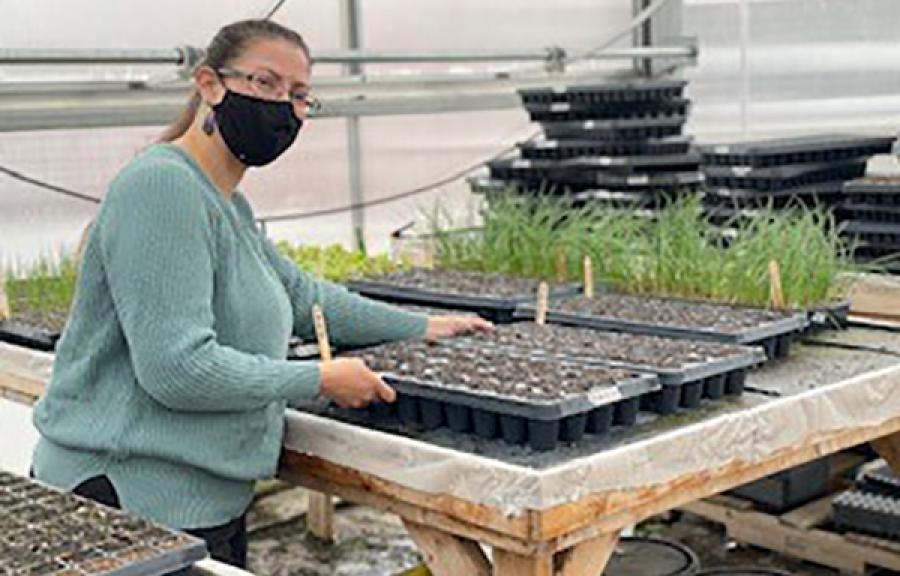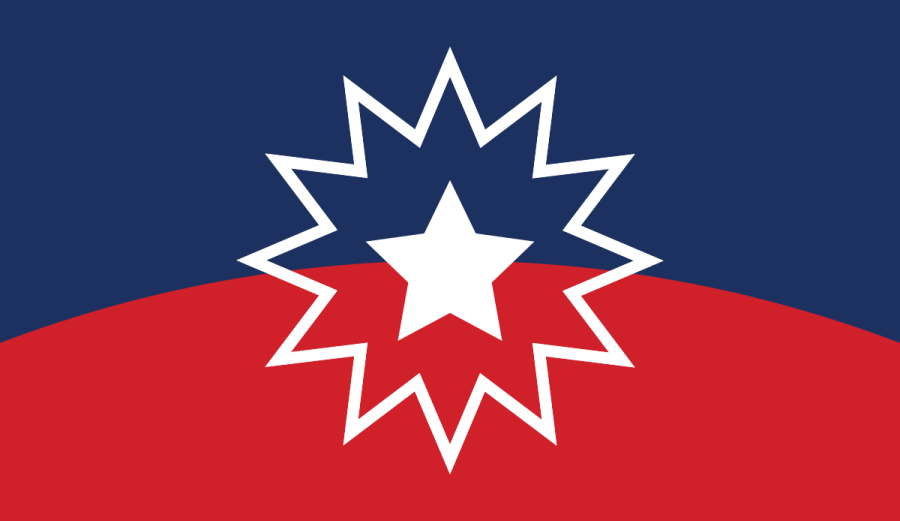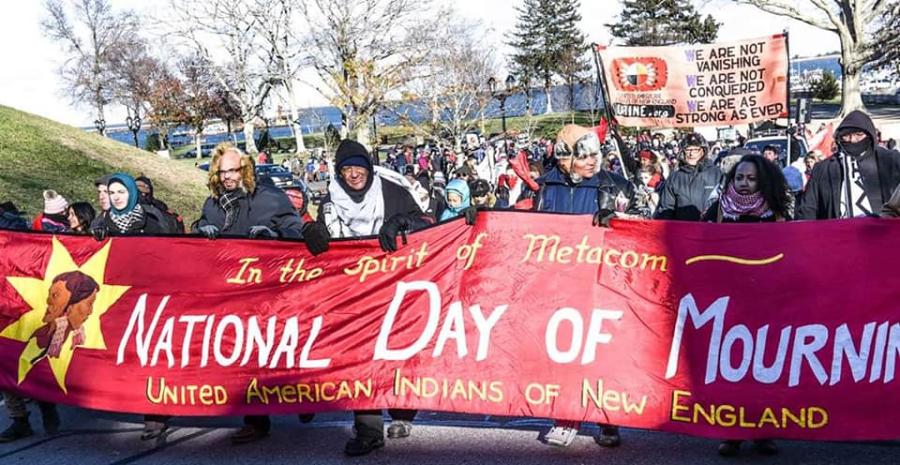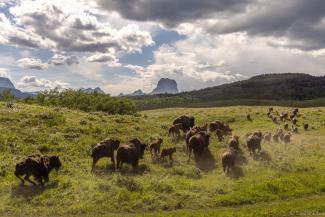
Western conservation remains singularly focused on numbers and data. Land conversion rates. Extinction rates. CO2 emissions. Acres protected. Miles connected. While these data are no doubt important, they miss the most important point when it comes to the reality, and ultimately the resolution, of our collective planetary crisis: through Indigenous eyes, conservation is a relationship. This vital work is a devoted practice. In our ways, conservation is love fiercely expressed.
The West teaches that conservation is achieved through objectivity and analysis. We are told that effectiveness requires us to keep heart and spirit out of it. But it is clear that the biodiversity, climate, and social justice crises are, at their root, a relationship crisis. The solutions require much more of us than just intellect or logic. Collectively, we have forgotten what it is to be in relationship with the natural world. We have forgotten that Buffalo, Beaver, and Bear are our brothers and sisters, and as a result we have forgotten, and thus violated, the sacred treaties made long ago with these sacred beings. We no longer remember what it feels like on our tongues to speak Buffalo, to speak the language of relationship: Respect. Reciprocity. Responsibility. Rematriation. Reconciliation. Western conservation has been asking the wrong questions. In an increasingly fatal error, the collective forgets what our ancestors knew and lived, what our Knowledge Keepers are desperately trying to remind us about Natural Law, about the relationship and responsibilities we have to the Earth, and most importantly, about how we can live and act in ways that honor this sacred relationship and the intricate and dynamic planetary systems vital to life and our physical, material, and spiritual well being.
Our home planet is fast approaching an irreversible tipping point, a point where nature can no longer heal herself and life as we know it will become untenable. Among the mind-bending statistics highlighted in the 2019 United Nations Intergovernmental Science-Policy Platform on Biodiversity and Ecosystem Services report: 1 million known species will disappear by 2050 unless radical measures are taken. More than 500,000 species are in effect “dead species walking,” meaning they have no chance of survival because of the expanding human footprint. Wild mammal biomass has plummeted by 82 percent, while humans and farm animals now make up 96 percent of all mammalian biomass on Earth.
There is no doubt our Mother is dying. We need to do everything we can to protect and heal this beautiful planet and all the exquisite beings we share her with. It is time we ask the right questions. It is time to assess the pros and cons of western conservation models and deeply interrogate what has worked, and what hasn’t. What can we learn from our glaring failures? What assumptions are blinding us to the way forward? What questions do we not yet know enough to ask? What if the hundreds of billions currently invested annually in western approaches to conservation were directed to Indigenous-led conservation models, approaches that are informed by western scientific models but are fundamentally guided by an entirely different paradigm: one informed by the language of restorative relationship, of love.
Mindset matters. Words also matter, and are often a reflection of our worldview, our values, and identity. The perspectives or worldviews we invite to the table shape the conversation. And how we shape the conversation sets destiny in motion; it defines the possible and informs the outcome. The modern language of conservation tends to the linear, the reductionist, the mechanistic. Input equals output. Success is measured in acres, miles, designations. The values embedded, consciously or unconsciously, reflect a language of ownership, control, or dominion over—a language of separation.
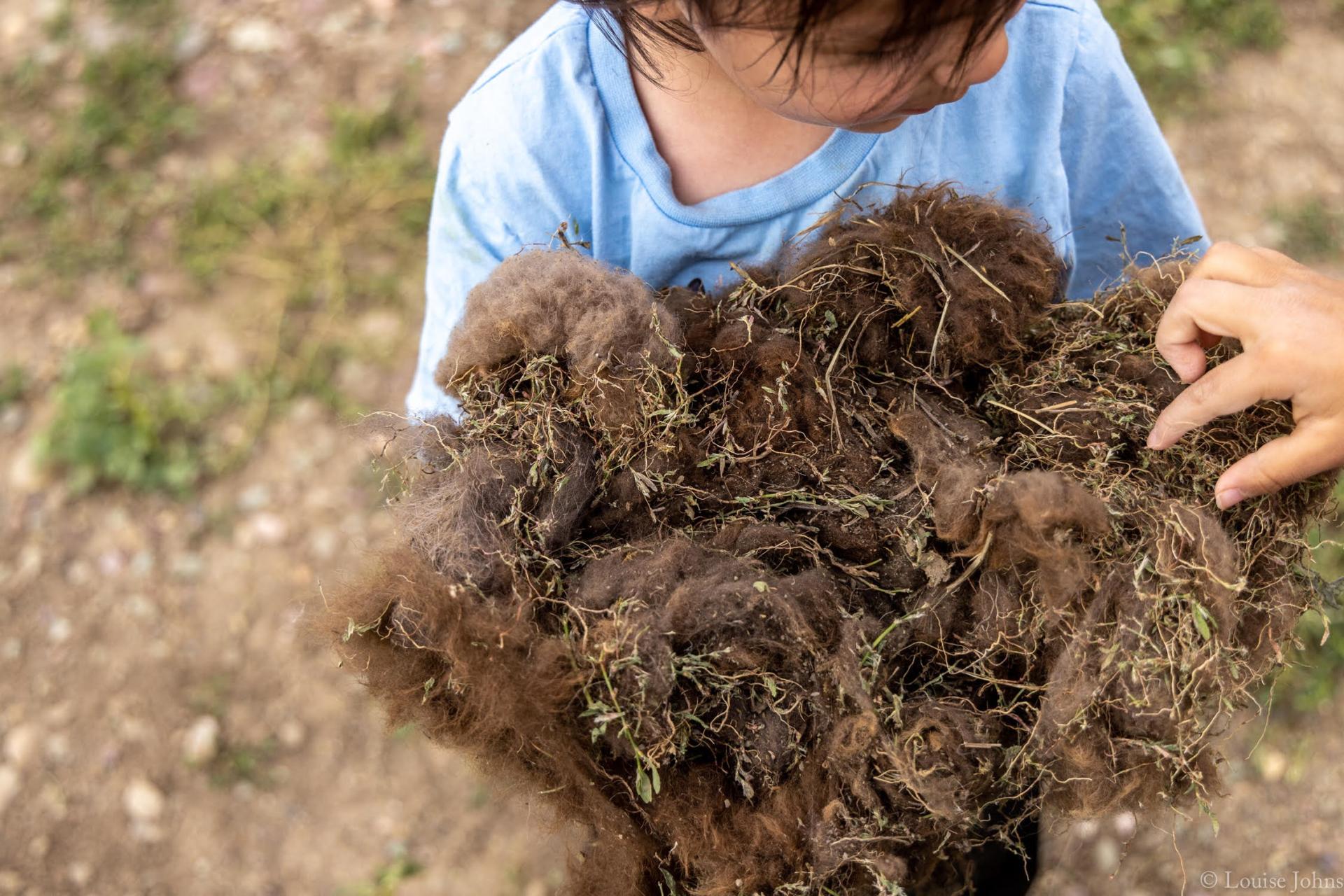
Children collect buffalo fur from the corral at Buffalo Spirit Hills Ranch. The fur is integral to the health of the grassland ecosystem, as certain species of birds use it to line and insulate their nests.
There is a much older language we can hear if we slow and listen. A language spoken in whispers, in murmurs. A language heard on a gust of wind, a bird wing ripping open sky, hooves cleaving earth, the slap of a tail on still water. This language speaks humility and honor, respect and reciprocity, kinship and kindness. This is the language of love that calls on all of us to remember that we’ve been wild for 99 percent of human history. Humans and the natural world have been inextricably intertwined in the most intimate and inescapable of embraces since the beginning of time.
In late June 2023, the Blackfeet Nation actioned love and made history when it returned 49 buffalo to their homelands in Blackfoot Territory, ensuring they were free to roam a landscape that colonizing forces had removed them from over a century ago. Forty-nine mighty wooly beasts ran out of stock trailers to freedom in the blink of an eye. A tourist who had stumbled onto the scene of the “traffic jam” asked me, “Does this happen every day?” Of course, it took millions of thrilling and agonizing moments to get to that day and over a decade of vigilant dedication to living the values of the Buffalo Way and weaving our way back to relationship with our relatives. But I didn’t say any of this. Instead, I mumbled through my tears, “We have been working with the Blackfeet Nation’s Buffalo Program for years to get to this moment, to return all that was taken from us by calculated campaigns of genocide.” “Best traffic jam ever,” she shouted in response over the community’s whoops and whistles celebrating buffalo freedom. The moment was tempered only by the thunder of hooves, the electricity of horns tossing sky as Buffalo reclaimed her rightful place in our hearts and in the order of things.
The story of Blackfeet buffalos’ return is a story within a story within a story. But ultimately, it is nothing more than a love story—an ode to relationship and the power it holds to teach us the way out of the planetary crisis we are living through. The unexpected, runaway success of Robin Wall Kimmerer’s book, “Braiding Sweetgrass,” is a profound testament to the hope and potential of restorative reciprocity, of relationship, and at the same time indicative of the depth of disconnection and grief that defines our times; the hunger for relationship.
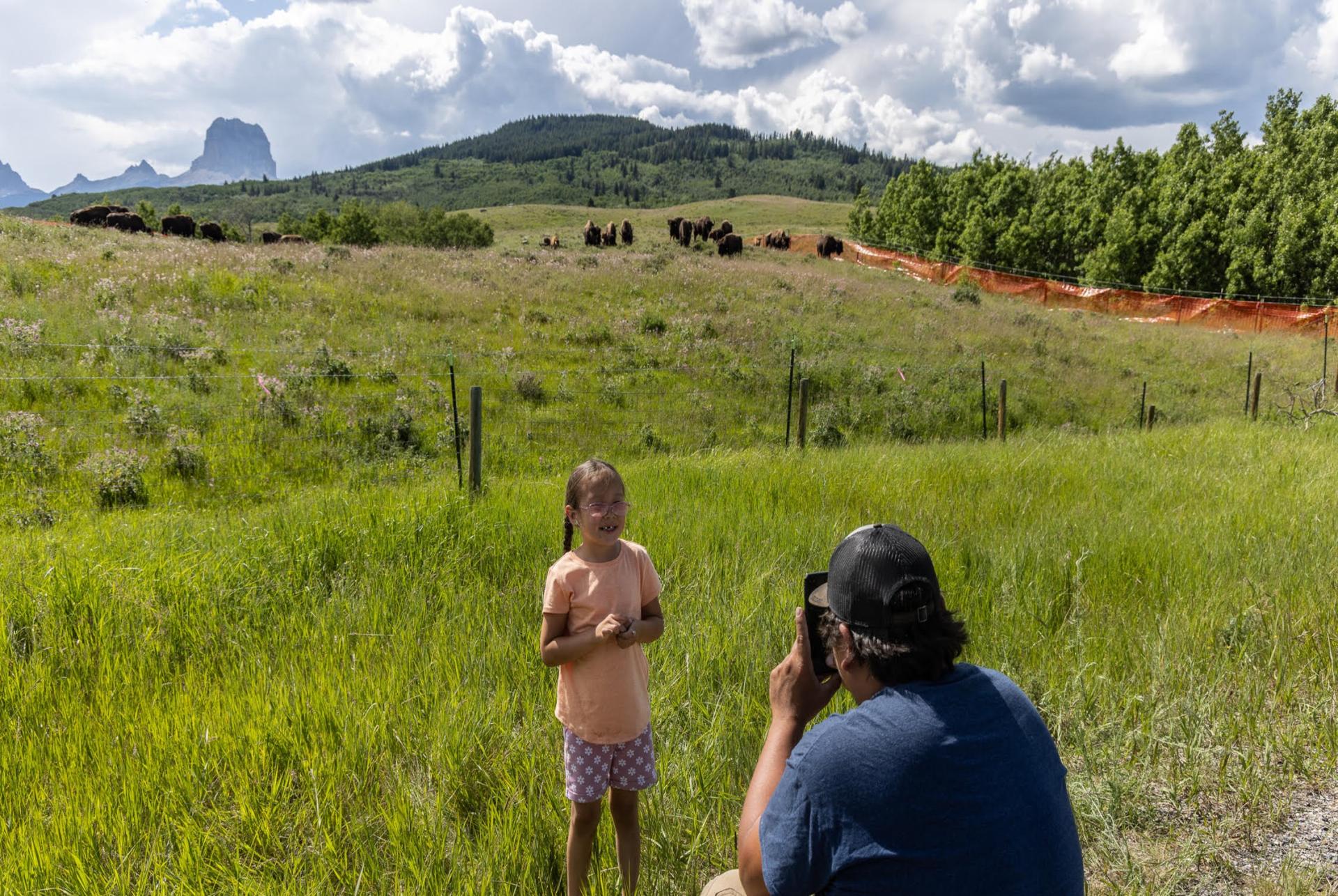
Blackfeet Tribal member Wyett Wippert takes a photo of his daughter in front of the buffalo in their soft release pen at Chief Mountain.
The language of relationship shimmers off Kimmerer’s pages, her voice a haunting reminder of the paradise lost in breaking the sacred covenant with the wild, breaking out of her intimate embrace like a petulant child. What Kimmerer’s work and success speaks to is the moment we are living through and the fact that this moment is calling on us all to remember, to wake up and remember the memories seeded in our blood. But she doesn’t tell us how. Her beautiful work doesn’t provide the road map so many need and are looking for. So how do we get there from here?
I live, and have lived, between worlds for my entire life. While I have much to figure out, I do understand the catalytic power of betweenness, of belonging everywhere and nowhere at once, of speaking many languages, none of them fluently; of the need to stay grounded in the present, one eye looking back, one forward. Buffalo fur is my tether. Whether worrying a piece of fur in my pocket like a rosary or weaving my fingers into a buffalo robe and holding on for dear life, touching Buffalo reminds me how to speak Buffalo and hear my ancestors singing me home while wielding science and strategy to find my way to the future. Like our relative Buffalo, we need to turn into the tempest, and with our prayerful past as our guide, respectfully place one hoof in front of the other and walk toward the reconciled and rematriated future we all know in our hearts. We need to Indigenize global conservation and bring into reality a new paradigm for the 21st century. One that sets the right tables and asks the right questions. One that is Indigenous-led, that embodies relationship and gives expression to the language of love.
--Cristina Mormorunni (Métis & Sardo), or Issistsáakiiksi (Wolverine Woman) is the Co-founder and Director of INDIGENOUS LED. She has 30 years of applied experience from the Arctic to the Antarctic leading campaigns and designing biocultural conservation strategies for nonprofits, foundations, and individual donors. She also serves as the Founder and Principle of the TERRAMAR collective, which provides strategic advice to foundations and nonprofits interested in Indigenous-led conservation and the protection of biocultural diversity. She is mildly obsessed with restoring 30,000 Buffalo to North America. www.indigenousled.org
All photos by Louise Johns.
Top photo: Buffalo run out of the soft release enclosure towards Chief Mountain on the Blackfeet reservation in Montana, the first wild free roaming herd returned by a sovereign Indigenous Nation in 150 years.
